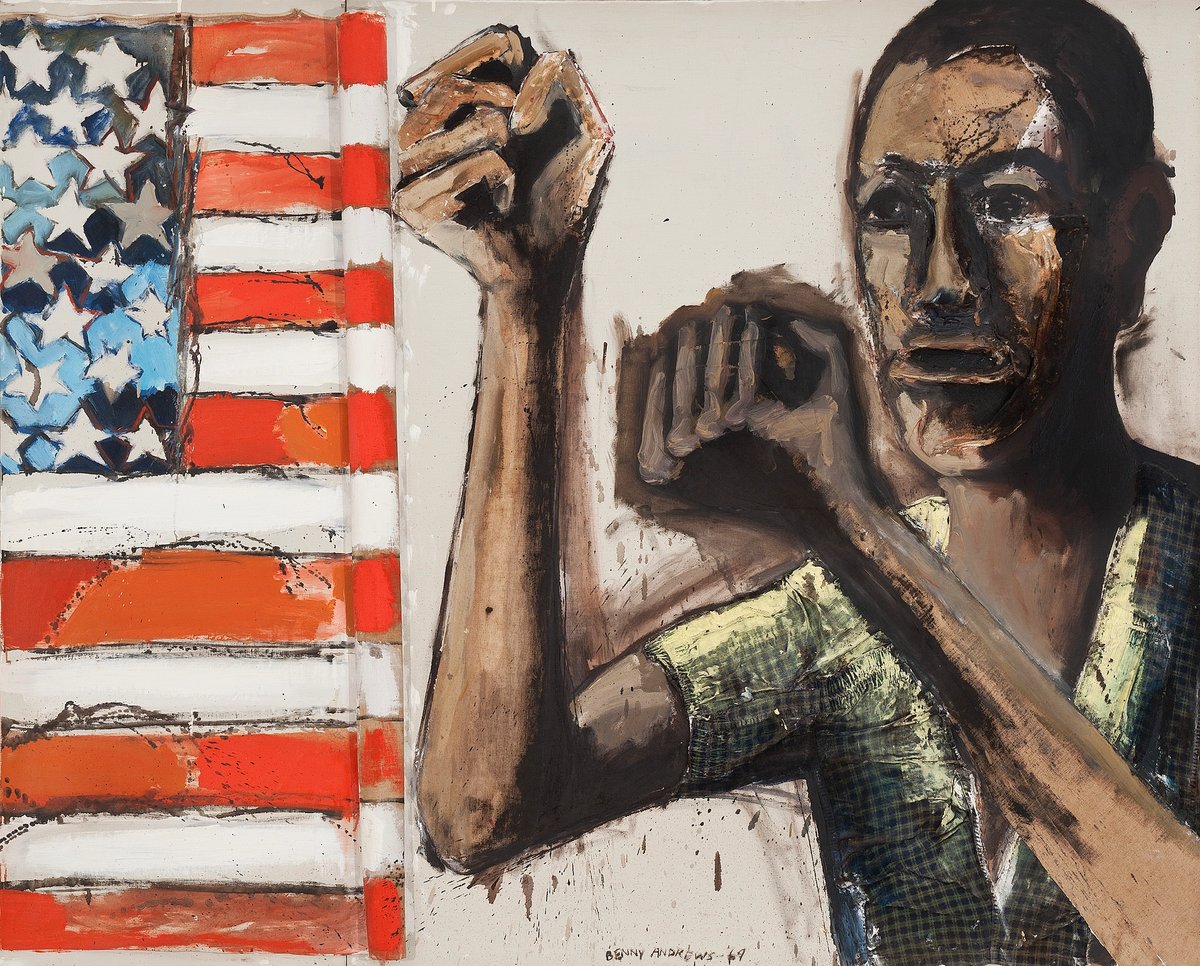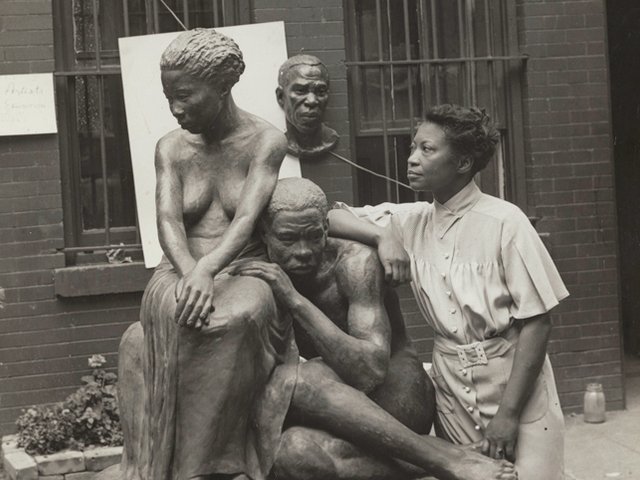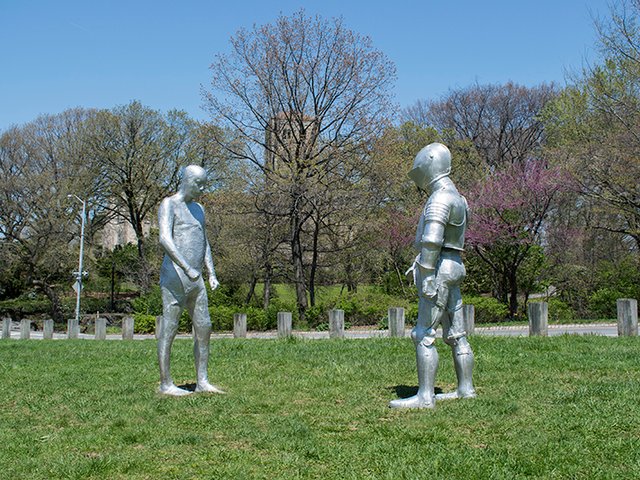Every American should see Soul of a Nation: Art in the Age of Black Power (until 3 February 2019) at the Brooklyn Museum. The two-floor exhibition looks at around 150 works from the 1960s to 80s by more than 60 African American artists. Arresting large-scale works include Norman Lewis’s commanding, semi-abstract 1960 painting America the Beautiful, with forms of Ku Klux Klan members spread across a black background, and Faith Ringgold’s large painting American People Series #18: The Flag is Bleeding (1967), in which the red stripes of an American flag drip blood down a picture of a black man, white woman and white man linking arms. Both works are just as resonant five decades later. But take your time on the smaller pieces in a gallery space dedicated to the New York-based photographers of the Kamoinge Workshop, where images like Beauford Smith’s Woman Bathing/Madonna of a nude pregnant woman on a rooftop in the rain, are just as powerful. Other artists include Barbara Jones-Hogu, on view in a gallery about the Chicago AfriCOBRA group, Romare Bearden, Barkley Hendricks, represented by several gorgeous portraits, and Emory Douglas, the Black Panthers’ minister of culture. There is also an interesting display that looks at the Brooklyn Museum’s own problematic history of displaying black artists’ work, namely with the creation of the Brooklyn Museum’s Community Gallery in 1968 in response to demands for representation by local Black artists, and the controversial dismissal of the gallery’s director Henri Ghent in 1971.
Before it closes on Sunday (23 September), catch Medieval Monsters: Terrors, Aliens, Wonders, a look at the way monsters functioned in the Middle Ages, at the Morgan Library & Museum. Around 70 medieval works, mainly manuscripts, are gorgeous and fascinating as objects, but are also enlivened (and made relatable) by the accompanying texts, such as the story of St Wilgefortis, whose desire for transformation into a male body like Christ makes her a significant figure for transgender and non-binary people. Look out for an illustration of a feathered siren that accompanies the 16th-century text by Pierre Gringore, Les abus du monde, on “the dangers of smooth-talking women who make fools of men”. The unicorn-crazed will enjoy spotting a real unicorn horn (actually from a narwhal, the arctic marine mammal), accompanied by manuscript illustrations of the fantastical beast.
The Mexico-City based sculptor Edgar Orlaineta gives old-school craftwork a Modern spin in his first New York solo show, We Do Not Work Alone (until 4 November), at the Lower East Side gallery Proxyco. Much of his work has riffed on the iconic designs of mid-century masters like Alexander Calder and Charles and Ray Eames while melding cosmic symbols with everyday objects. Yet his latest work is more modest in size and scope. His small groupings of solid wood sculptures in the shape of common pottery pieces, all framed against minimalist handmade tapestries, recast the historically overlooked tradition of craft in the vernacular of Western 20th century art.





